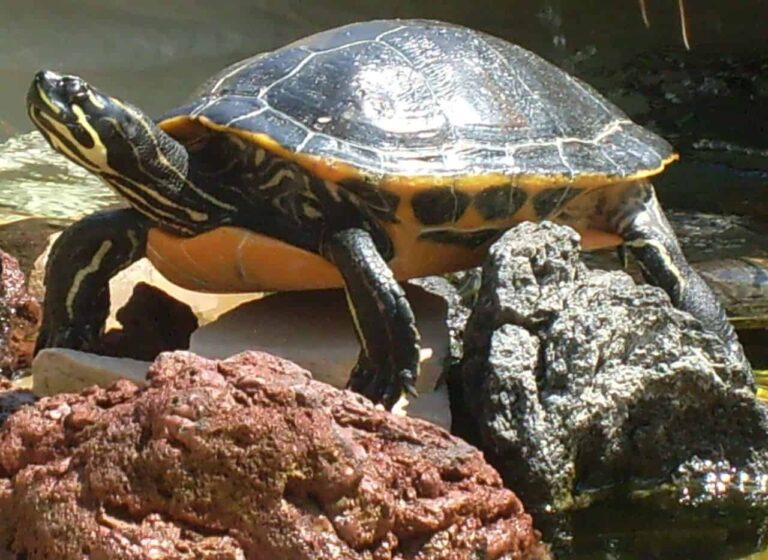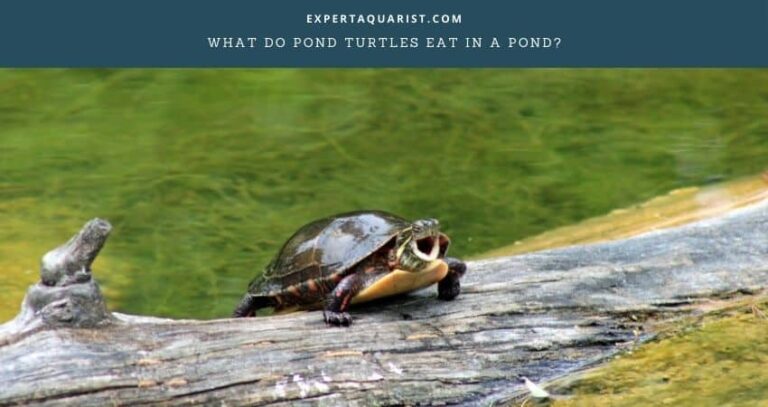It is in the nature of turtles to love being in the water. They are physiologically adapted to be great swimmers thanks to their lighter and more water-dynamic shells, which is why they spend so much time in it.
In contrast, other species like the tortoises live exclusively on land, and their physiology does not permit them to swim due to their heavier build. However, even within the different turtle species, there is a great variety of turtles that are aquatic, semi-aquatic, or mainly terrestrial.
But can turtles live away from water for prolonged periods of time? Let’s take a look at how long turtles can stay out of water.

How Long Can Turtles Stay Out of Water: Determining Factors
Species
To determine how long a turtle can stay out of the water, there are certain factors you need to account for first. The main one is the species it belongs to. Because there is a large variety of turtle species with different behaviors, the time a turtle spends off the water can also vary.
Some turtle species spend more than half their entire life in the water and only come out to bask. Much like most reptiles, turtles cannot regulate their body temperature, so they must bask for a certain amount of time on land every day.
However, even accounting for the time they spend basking, most of their day is still spent in the water, even when sleeping. Many turtles sleep on the surface of the water, while others sleep underwater.
Moreover, many of them cannot feed on land due to their body structure and the fact that they do not produce saliva. Therefore, even when eating, they are in the water as it helps them swallow their food.
Even sea turtles, who spend most of their lives in the ocean, must come to land to lay their eggs. Turtles have lungs, so while they can spend much time underwater, they still have to return to the surface to breathe.
However, the difference with sea turtles is that they can hold their breath for several hours. During their hibernation period, sea turtles can stay underwater, sleeping for up to seven hours.
Of course, sea turtles differ quite a lot physiologically from freshwater turtles. Regardless, freshwater turtles can still hold their breath for quite some time but nowhere near the time that sea turtles can. However, a lot of freshwater turtles have the advantage that they can stay much longer off the water than sea turtles.
Terrestrial turtles live exclusively on land, while some semi-aquatic or aquatic turtle types live in shallow or dry areas and can go for a long time without water. Examples of terrestrial turtles are the wood turtle and the dessert box turtle, while some examples of semi-aquatic turtles are the pond turtle, the painted turtle, the map turtle, mud/musk turtle, and the red eared slider turtle.
Climate
As mentioned earlier, turtles cannot regulate their body temperature, so they have to hibernate during the winter months of the year to cope with low temperatures. During that time, the temperature is not warm enough to generate body warmth, so just basking would not be enough for them to survive.
Therefore, they must slow down their body metabolism and spend as little energy as possible. Therefore, turtles do not drink water or eat food too often during hibernation, which can last up to several months. This means that they can go without water for long periods of time.
However, if the temperature of their environment is warm enough, they will not hibernate and will continue their basking routine all year long.
For example, a pet turtle is put in environments where the temperature is specifically regulated based on their needs, so they need to go into hibernation. If they live in a humid environment, it will probably help them go without an outside water source longer as the humidity generally hydrates them.
Age
Age also determines how long turtles can stay out of water. Like most species, young turtles cannot do everything their adult counterparts can. This is also true for how long they can stay out of water.
Younger turtles, especially new hatchlings, cannot store the same amount of water as adult turtles. This is because they are not as developed as the adult ones. Young turtles are also required to hydrate more often, so their ability to stay out of water for long periods increases the older they become.

How Long Can Turtles Go Without Water?
In hotter climates, turtles can go without any water for several days. However, they will be at risk of dying from dehydration, and even if they survive, their health will be greatly impacted. On the other hand, young turtles will be able to survive for far less time since they need more energy to grow.
In cooler climates, a turtle’s survival time increases thanks to the humidity. However, a hibernating turtle changes how long they can survive without outside water since they slow down their metabolism and burn less energy.
Can turtles drown? Yes. Turtles can down because they have lungs like other reptiles. A sea turtle cannot breathe underwater but can hold its breath.
How Long Can Turtles Stay Out of Water?
Usually, aquatic turtles come out of the water only to bask. The amount of time they spend basking is between 8 to 12 hours each day, and that is how long they stay on land daily. Similar to not drinking water, having no access to a body of water can also impact their health.
While aquatic turtles can stay out of the water for a couple of days to a maximum of a week, they will be extremely weak and still die from dehydration. Cooler temperatures might help a turtle survive longer, but the impact on its health will still be severe.






